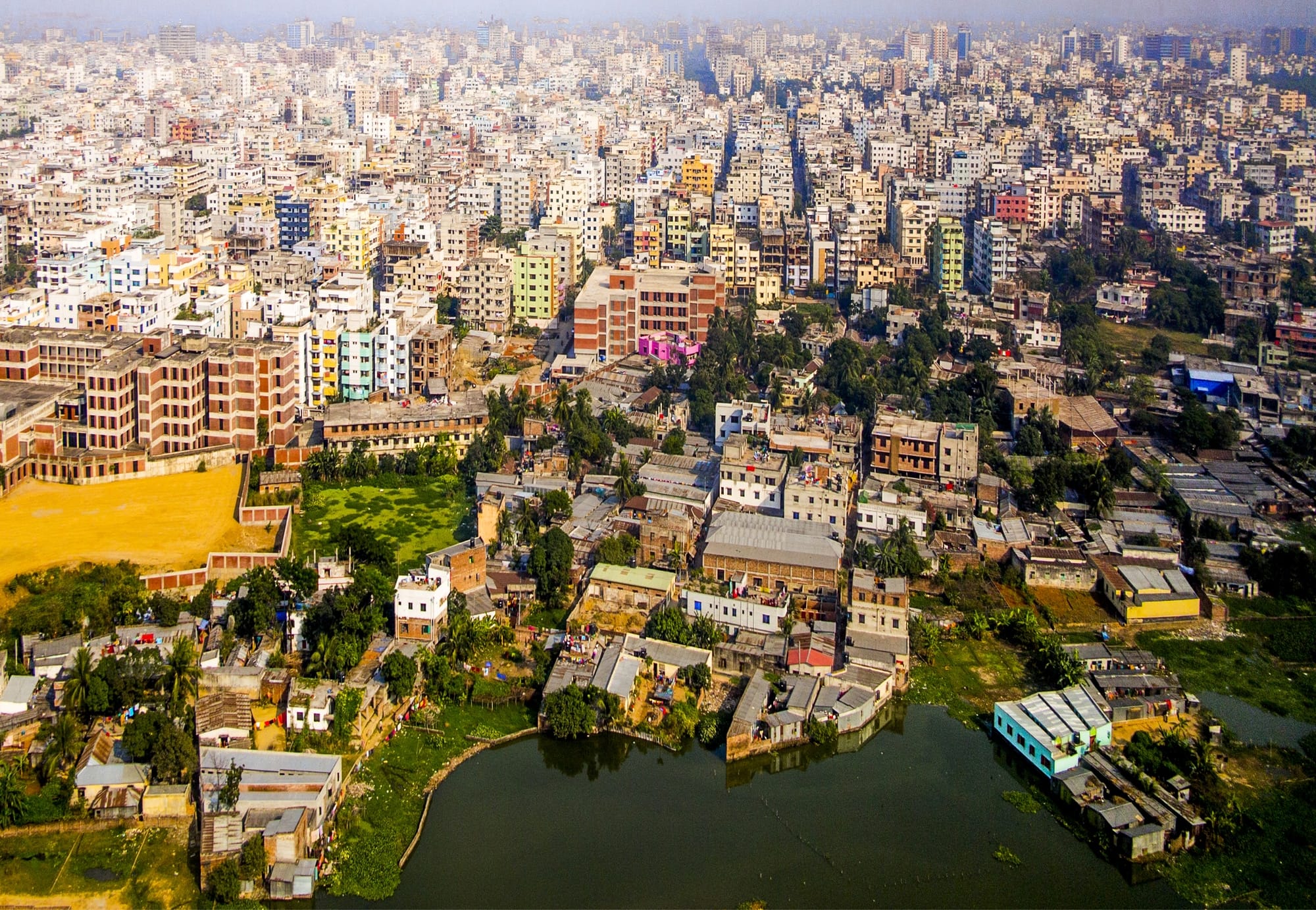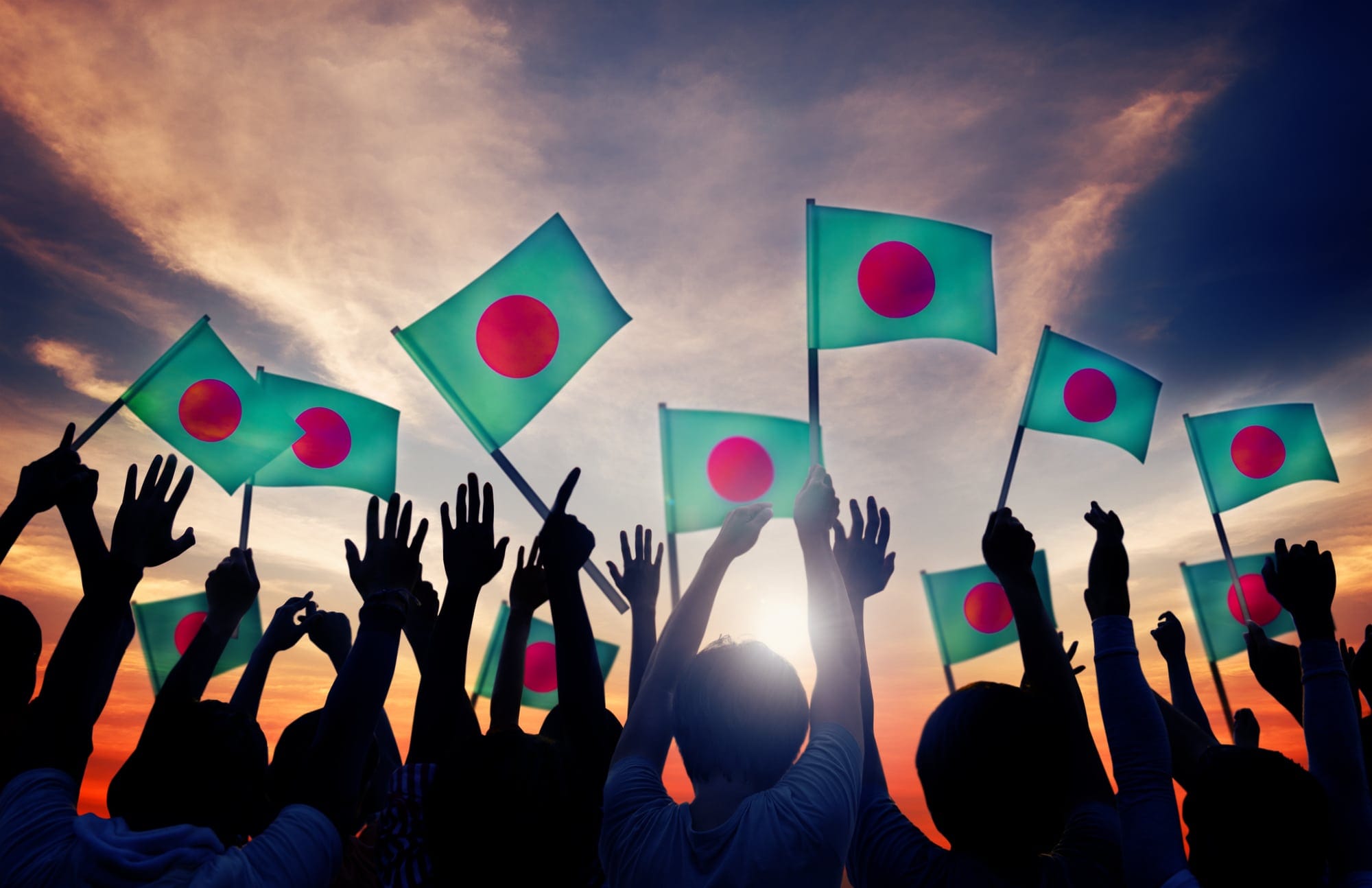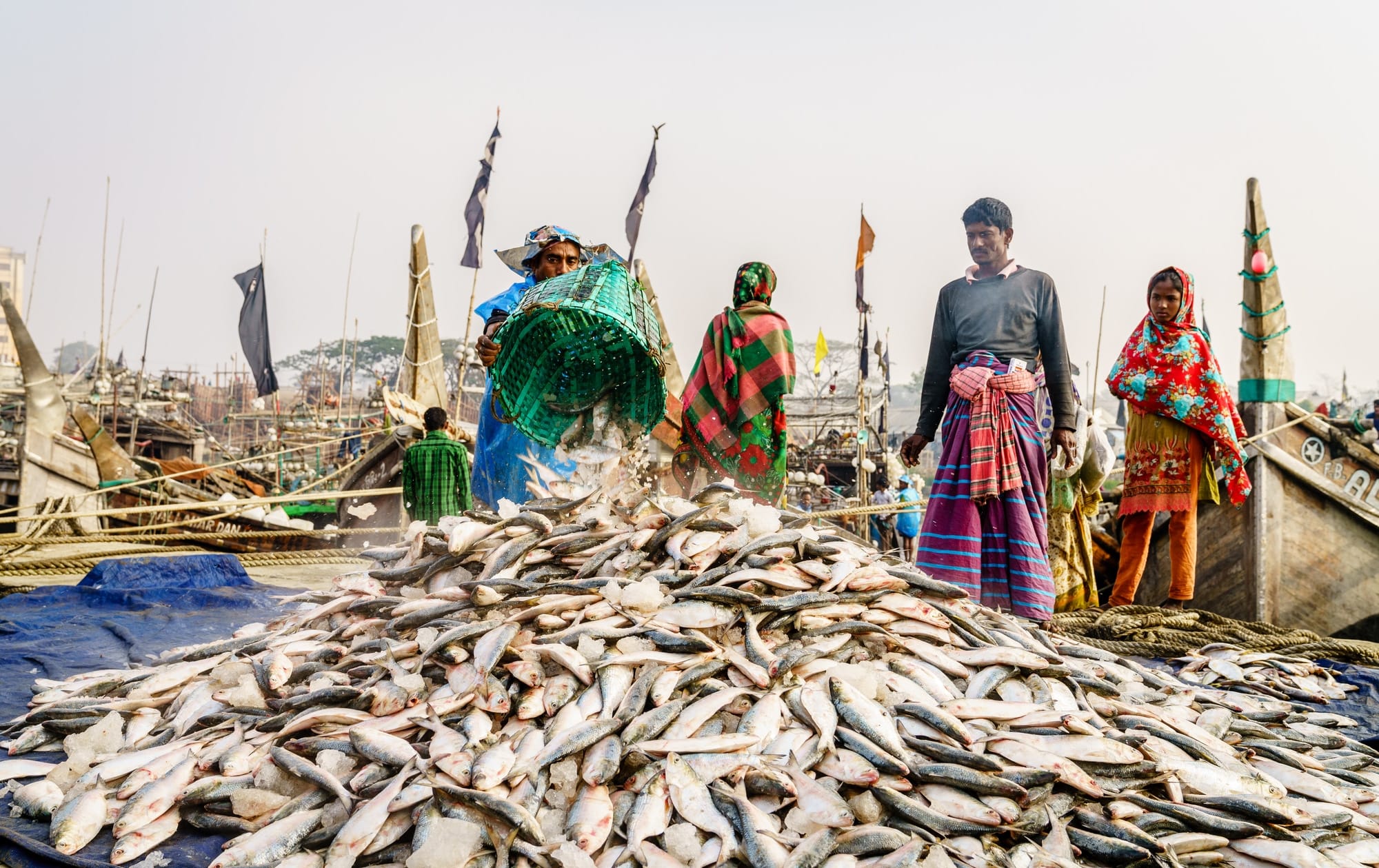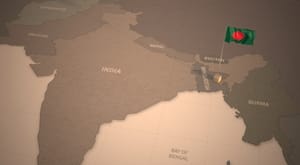Our Bangladesh PESTLE analysis discusses the country’s prospects for conducting business and whether or not Bangladesh has decent investment opportunities.
Bangladesh is a country located on the Bay of Bengal in Southeast Asia. In this article, we will be discussing the country’s prospects for conducting business and whether or not Bangladesh has decent investment opportunities.
In the following Bangladesh PESTLE analysis, you will get a deeper insight into the overall environment of the country.
Political Factors: Bangladesh is working on improving its diplomatic ties
After a long 9 months of war with Pakistan, Bangladesh became an independent nation in 1971. Ever since then the Bangladeshi political system has seen many twists and turns.
Like other third-world nations, Bangladesh also underwent a military takeover that lasted from 1975-1990. Naturally, the democratic constitution was let go of during this regime to satisfy the military personnel.
Islam was nominated as the state religion during these days and politics based on religious sentiment became a norm. It was previously banned for religious political parties to practice in the secular nation of Bangladesh but the ban got lifted during this period.
In 1990 the military regime was overthrown and a caretaker government took charge. Afterward, it remained a tug of war between the Awami League (AI) and Bangladesh National Party (BNP) for the control of power, democratically this time around.
Trade with India
The developing countries of Southeast Asia have been very adversely affected by the covid-19 pandemic. As a result, both countries owing to their shared interests, heritage and culture announced a partnership on 25 July 2020 to combine their efforts in recovering.
Naturally, when both countries combine their forces to fight their battles, success becomes even more inevitable.
They both have a lot to contribute to each other and many industries and sectors in both countries will benefit e.g. tourism industry; most of the tourists in India are Bangladeshi people.
Joe Biden’s Win and Bangladesh:
There are mixed opinions in the market depending on who you might ask about the future of the relationship between the two countries under Biden’s presidency.
The members of the currently leading party of Bangladesh (Awami League) are of the opinion that the relationship will prosper and improve whereas other experts on diplomacy and international/current affairs think that Biden’s win is insignificant to the relationship.
The Bangladeshi government is hopeful to work with the USA to improve their trade and commerce activities and the PM believes that the newly elected Democrats will show compassion towards working for the Rohingyas.

Economic Factors: Growing economy amidst the pandemic
Being a third-world country has its fair share of challenges but amazingly enough, Bangladesh has shown consistent economic performance.
They have exhibited some of the fastest growth rates in the world which have made it possible for them to eradicate poverty and other social issues.
GDP and Covid-19
During the pandemic, the GDP of Bangladesh is expected to fall down about 2% in 2020 however the International Monetary Fund predicts that they will manage to increase it by a whopping 9.5% in 2021! The growth was 7.9% in 2019.
As a part of the recovery plan from the pandemic, the PM has announced a package of Tk 72.750 crore (USD 8,573 million) which amounts to almost 2.52% of the country’s total GDP!
The government plans to create more stimulus packages and jobs for the people in the coming days.
Revenue Streams
Bangladesh earns a lot from remittances (5 % of GDP $16.4 billion in FY 19) and the export of garments to other countries. Most of the workers in other countries sending money back to Bangladesh are in the Gulf States which have been affected by the drop in oil prices.
Although the remittances have been promising in light of the second wave of the dreadful pandemic, orders worth billions of dollars have been canceled by the USA.
Sectors Contributing to the Economy
Although Bangladesh is the fourth biggest producer of rice, they are often faced with natural disasters which forces them to sometimes import rice. Other produce includes tea, jute, wheat, sugarcane, tobacco, spices, and fruits. Agriculture represents 13.1% of GDP.
The industry is a big contributor to the GDP (28.5%) and textile is the biggest industry in the country. Although the industry does a lot for the economy a very big issue they are facing is the huge void that exists between the customer demand and the actual supply of cotton.
However, the biggest contributor to the GDP is Services (53.5%). Amazingly Bangladesh is a big exporter of technology; they are already earning huge sums but the government is now planning to increase the revenue to $5 billion by 2021.

Social Factors: Hierarchical and rich culture of Bangladesh
Bangladesh is one of those countries which have an amazingly rich culture. It can be observed in their art forms; architecture, dances, music, clothes and so much more.
There are three religions that are predominantly practiced by the Bangladeshi population; Hinduism, Islam, and Buddhism.
Bangladesh has a very similar cultural heritage to India. The music, clothes, and food all are very similar between the two countries.
Facts about the Population
The population of the country makes up about 2.11% of the world’s total population. The current population of Bangladesh is 165,424,778 as of Sunday, December 13, 2020.
The average age of the country is approximately 27 years which shows that it has a huge population of youth, good news in terms of potential innovation for the future.
39.4% of the total population settled in Bangladesh is urban whereas the rest is in rural areas.
Languages:
98% or nearly all of the population speaks Bangla, however, most people are also able to communicate in Urdu, Hindi, and English.
They are able to communicate globally using English especially those people who deal in business activities.
There are many words that have been adopted from both Islamic and Hindu-based languages in their common vocabulary, depending on the majority of each population in Bangladesh.
Culture
Bangladesh is a society based on hierarchical values; the younger people are expected to respect the older people because of the age difference. This is also why the decision making is left to the oldest members of the family, mostly males because wisdom is associated with their age.
This practice of listening to older people is even practiced at workplaces and businesses.
The majorities of the people are religious and have their set of beliefs in Shamanism and Fakirs, who happen to be Muslim men thought to be faith healers.
Religion-based festivals are the norm observed in Bangladesh. Two Eids, Shab-e-Qadr, Milad-un-Nabi, and Shab-e-Barat are some of the important Islamic festivals. Hindu festivals include the celebration of Durga Puja and Kali Puja.
The best thing about the country is that they are all extremely tolerant of each other’s beliefs and practices.
Technological Factors: A promising technological scene in Bangladesh
As we’ve already discussed the tech scene taking place in Bangladesh, they are planning on taking advantage of digitalization; Bangladesh wants to have a digital economy by becoming a global market for digital outsourcing.
This move will not only improve Bangladesh’s global position, it will also help the local population in terms of more job opportunities and a stronger economy.
Freelancing is becoming a popular practice with huge countries like Australia, the USA, and the UK outsourcing their IT work to Bangladeshis.
South Asia’s IT Hub
Bangladesh stepped into the water of exporting technology in the 1990s. They started by exporting soft wares but since then they have started dealing in computer programs as well.
Currently, India is the biggest competition in Southeast Asia for them but at the pace, Bangladesh is going at, Bangladesh has become a serious exporter for IT.
One of the country’s software companies, Data Soft currently exports its IT services to the Netherlands, Norway, Finland, England, EU, USA, and Saudi Arabia amongst other countries.
Current Tech Scenario:
Bangladesh has a couple of universities, research facilities, and an industrial base (to some extent).
They need to work on bridging the gap which exists between their industry and applied research; they need to up their research activities to boost their technology so that they would be able to better compete internationally.
The universities also have to improve their curriculum to include more practical experience with using technology.
Not all industries in Bangladesh are inept technologically, with the exception of a few. Bangladesh has to work on shifting the economy from being primarily trade based to being technology-based.
Future Possibilities
The country can start by valuing the innovative minds it has; they should encourage innovation by supporting the brains with resources to implement their ideas.
They need to work on filling the gap between their educational institutes with their industry. Developing the practice of research in the country is their ticket to technological advancement.
A great strategy and opportunity for Bangladesh is to invest in acquiring technologies that have become outdated and hence expensive in other countries. This will enable them in becoming competent with technology.
Legal Factors: Opportunities for foreign investors
It is a good idea to understand a country’s legal policies and do’s and don’ts, especially from a business perspective.
Judicial System
The judicial system in the country is the same one that was used by the British during their rule of the sub-continent.
Over the years it has evolved from a mix of both English as well as Mughal practices. There is a representation from both Hindus and Muslims in their administration.
Foreign Investment
Foreign investment, though welcome, is denied for some industries especially the ones which are related to national defense, forest plantation, and mining.
In fact, the government is encouraging foreign investment in the local industries so as to boost the economy and the infrastructure.
Tax Exemption
Tax exemptions are the incentive offered to investors who have invested in a business in the thrust sector of Bangladesh between the periods 1 July 2019 and 30 June 2024. Thrust implies any sort of industry or business which hones the industrialization of the country.
Certain percentages of tax reduction are offered to investors according to the industry they decide to tap into.

Environmental Factors: Climate and hazardous pollution facing the country
Bangladesh can be summarized in the following factors pertaining to its environment.
Climate and Weather
Bangladesh is a subtropical country with a monsoon climate. This tells us that it is a hot country with a lot of humidity and rainfall. Summer temperatures range from 30°C -40°C.
It isn’t hot throughout the year though; summer lasts from March to June with April being the hottest and is accompanied by humidity, June to October is when the monsoon decides to pay a visit, and then finally cold and dry weather stays from October to March, January being the coldest.
This is why light clothing generally made from cotton is very popular over there to help against the heat and humidity.
Bangladesh has extremely high amounts of rainfall with the whole country receiving an average of 1600 mm.
Climate change is a very big danger for this country. It is estimated that by 2050 at least one out of every seven people will be adversely affected because of it.
Sea levels rising are a very big threat to the locals because they would have to be displaced and relocated in huge numbers to save them. The population is very dense and heavily reliant upon farming. Currently, the infrastructure isn’t enough to save everyone.
Pollution
Like other third world countries, pollution haunts Bangladesh. In 2019 the country was deemed the most air polluted country on the planet with Dhaka being the second most air polluted city in the world.
The air pollution did reduce a certain amount due to the lockdown imposed by the onset of the Covid-19 virus. This certainly doesn’t reduce the alarming reality of air pollution being a serious threat to the country.
Water pollution is also a problem in Bangladesh; even though most people have access to water, the quality of said water is not good enough to be drunk in certain areas.
Bangladesh PESTLE Analysis: Conclusion
Based on the detailed PESTLE analysis of Bangladesh, many reviews can be drawn out of it. The country remains in the developing phase and may stay there for an unforeseeable future.
They have many battles to fight, the biggest being a counteractive climate change policy to help save the lives of the local population.
Despite their fair share of challenges, they are improving their diplomatic ties and have many investment and development opportunities for not only locals but foreigners as well. The PM was very successful in distributing finances for the post-pandemic situation. All in all, it is a country filled with potential and possibilities.


